Speculation is increasing in Malaysia that of one of the country ‘s elite politicians, Deputy Prime Minister Mohd Najib Tun Abdul Razak, is in serious trouble due to a series of messy scandals.


 Former Deputy Prime Minister, Tun Musa Hitam seems to be playing to the non-Malay gallery. Last Dec in an interview with the largest circulated daily newspaper in the country, Sin Chew Jit Poh he was quoted as telling the GLCs to stop pinching Malay professionals from Chinese enterprises.
Former Deputy Prime Minister, Tun Musa Hitam seems to be playing to the non-Malay gallery. Last Dec in an interview with the largest circulated daily newspaper in the country, Sin Chew Jit Poh he was quoted as telling the GLCs to stop pinching Malay professionals from Chinese enterprises. have a decision by the Advisory Panel of the Iskandar Development Region – made up of five very wise and
have a decision by the Advisory Panel of the Iskandar Development Region – made up of five very wise and  influential men – that the race quota favouring the Malays should be done away with. The other members are tycoon Robert Kuok, Tan Sri Samsudin Osman former Chief Secretary to the Government, prominent Indian business tycoon Tan Sri Kishu Tirathai and economist Datuk Andrew Sheng.
influential men – that the race quota favouring the Malays should be done away with. The other members are tycoon Robert Kuok, Tan Sri Samsudin Osman former Chief Secretary to the Government, prominent Indian business tycoon Tan Sri Kishu Tirathai and economist Datuk Andrew Sheng. Development Region being actively promoted to upgrade development efforts in southern Johore can only succeed if policies favouring the Malays are dropped.
Development Region being actively promoted to upgrade development efforts in southern Johore can only succeed if policies favouring the Malays are dropped. Singaporeans can come and go as they pleased without having to go through Immigration and Customs formalities. It looks as if Johore is being made the playground for the Singaporeans.
Singaporeans can come and go as they pleased without having to go through Immigration and Customs formalities. It looks as if Johore is being made the playground for the Singaporeans. meet them here. I mean, they're still annoying but something happens to them once they cross the bridge, I don't know. It's like they get possessed by demons hell-bent on making as few friends as possible.
meet them here. I mean, they're still annoying but something happens to them once they cross the bridge, I don't know. It's like they get possessed by demons hell-bent on making as few friends as possible.
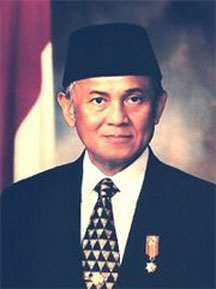 Deep within them is their inferiority complex of being small, a dot on the map as described by former Indonesia President, B.J. Habibie. Their being successful is to a certain extent also due to their being exploitative in their relationships with their immediate neighbours ie Indonesia and Malaysia. Thus this obsession to convince themselves that they are better. The one-upmanship, the kiasu mentality.
Deep within them is their inferiority complex of being small, a dot on the map as described by former Indonesia President, B.J. Habibie. Their being successful is to a certain extent also due to their being exploitative in their relationships with their immediate neighbours ie Indonesia and Malaysia. Thus this obsession to convince themselves that they are better. The one-upmanship, the kiasu mentality. While in their case they were actually 'kicked out' by the founding first Prime Minister, Tunku Abdul Rahman Putra after the island's leaders, especially Lee Kuan Yew who went on the offensive to play up racial issues during the 1964 elections when the PAP contested for a number of seats for the federal parliament. Such campaign tone could compromise the somewhat fragile relationships between the Malays and the non-Malays then.
While in their case they were actually 'kicked out' by the founding first Prime Minister, Tunku Abdul Rahman Putra after the island's leaders, especially Lee Kuan Yew who went on the offensive to play up racial issues during the 1964 elections when the PAP contested for a number of seats for the federal parliament. Such campaign tone could compromise the somewhat fragile relationships between the Malays and the non-Malays then.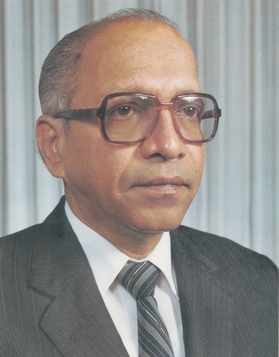 questioned Malays rights as enshrined in the Federal Constitution, the PAP lost. The Malaysian Chinese refused to be baited and thus only one of the PAP's candidates, C.V. Devan Nair who stood in Bangsar was returned even though the party had contested only in Chinese predominant areas.
questioned Malays rights as enshrined in the Federal Constitution, the PAP lost. The Malaysian Chinese refused to be baited and thus only one of the PAP's candidates, C.V. Devan Nair who stood in Bangsar was returned even though the party had contested only in Chinese predominant areas. Thus the statement by its Foreign Minister, George Yeo earlier this month is not surprising at all. This is what he said: "From time to time we must expect countries to pressure us in the hope that we will give way to their demands. Singaporeans know that if we give in to such pressure, we would only invite more such pressures," so said Yeo in the Singapore parliament.
Thus the statement by its Foreign Minister, George Yeo earlier this month is not surprising at all. This is what he said: "From time to time we must expect countries to pressure us in the hope that we will give way to their demands. Singaporeans know that if we give in to such pressure, we would only invite more such pressures," so said Yeo in the Singapore parliament. Dr Neilson Mersat Ph.D (ANU), M.A. (UKM), B.A. (Hons) (UKM)
Dr Neilson Mersat Ph.D (ANU), M.A. (UKM), B.A. (Hons) (UKM) party's top brass: one minister, one assistant minister, a mayor and a political secretary to the Chief Minister of Sarawak. In fact, SUPP supporters concurred that it was the hardest blow for their party since it was established in 1959. This prompted SUPP's chief, Tan Sri Dr George Chan, to make a public apology to the Chief Minister, Tan Sri Abdul Taib Mahmud and also to the Prime Minister, Datuk Seri Abdullah Badawi for SUPP's dismal performance. George Chan himself won,
party's top brass: one minister, one assistant minister, a mayor and a political secretary to the Chief Minister of Sarawak. In fact, SUPP supporters concurred that it was the hardest blow for their party since it was established in 1959. This prompted SUPP's chief, Tan Sri Dr George Chan, to make a public apology to the Chief Minister, Tan Sri Abdul Taib Mahmud and also to the Prime Minister, Datuk Seri Abdullah Badawi for SUPP's dismal performance. George Chan himself won, but with a majority sliced by half. For SUPP leaders, the tremendous decline in support for the party was due to their failure to address several important issues, which affected urban voters. For example, one of SUPP's defeated candidates attributed the party's defeat to the announcement made by the federal government just prior to the state election, regarding the sharp increases in oil prices. Another issue involved landowner concerns over the renewal of sixty-year land leases, mostly in Kuching and Sibu, which were about to expire within the next five years. They were also concerned that they would have to pay a high premium to renew their leases. They even asked for automatic renewal of land leases and that such leases be converted into grants in perpetuity. However, their requests were rejected.
but with a majority sliced by half. For SUPP leaders, the tremendous decline in support for the party was due to their failure to address several important issues, which affected urban voters. For example, one of SUPP's defeated candidates attributed the party's defeat to the announcement made by the federal government just prior to the state election, regarding the sharp increases in oil prices. Another issue involved landowner concerns over the renewal of sixty-year land leases, mostly in Kuching and Sibu, which were about to expire within the next five years. They were also concerned that they would have to pay a high premium to renew their leases. They even asked for automatic renewal of land leases and that such leases be converted into grants in perpetuity. However, their requests were rejected. as the Chief Minister on 26 May 2006, he made a record of sorts by becoming the longest serving Chief Minister in Malaysia. He was appointed in 1981 by his uncle, Tun Abdul Rahman Yaakub, who was then the Chief Minister of Sarawak. This is his seventh term. Surprisingly, the succession issue, which was a 'hot issue' before the state election, no longer takes centre stage. A senior party leader, who was tipped to be his successor, was not even included in Taib Mahmud's new cabinet line-up. What is obvious is that Taib Mahmud is now set to bring Sarawak into the second phase of his 'politics of development'.
as the Chief Minister on 26 May 2006, he made a record of sorts by becoming the longest serving Chief Minister in Malaysia. He was appointed in 1981 by his uncle, Tun Abdul Rahman Yaakub, who was then the Chief Minister of Sarawak. This is his seventh term. Surprisingly, the succession issue, which was a 'hot issue' before the state election, no longer takes centre stage. A senior party leader, who was tipped to be his successor, was not even included in Taib Mahmud's new cabinet line-up. What is obvious is that Taib Mahmud is now set to bring Sarawak into the second phase of his 'politics of development'.(Link edited by YM)
Trade is the lifeblood of the Malaysian economy. However, care must be exercised in interpreting trade statistics.
THAT Malaysia’s trade recently crossed the RM1 trillion mark was, indeed, great news. This represents an important milestone and a feather in the cap for the Malaysian economy. While the announcement was certainly newsworthy, the euphoria and hype it generated was a little disquieting. Some even went so far as to label Malaysia a trillion-ringgit economy, regardless of the fact that its gross domestic product (GDP) is still roughly one-half of that.
A closed economy’s GDP represents the sum of consumption and investment expenditures. With an open economy, exports are added to and imports are subtracted from the aggregate of domestic consumption and investment, to arrive at GDP. If exports exactly equal imports, trade numbers cannot affect the aggregate in the accounting sense. This does not mean that trade does not matter in the economic sense. It certainly does: In the absence of trade, domestic consumption and investment would be significantly lower. robust GDP growth of 5.9 per cent. It is pertinent to recall that employment had grown at a faster pace of 2.8 per cent in 2001 despite sluggish GDP growth of just 0.4 per cent. Unemployment has remained stubbornly high at 3.5 to 3.6 per cent since 2001, despite reasonably good GDP performance. Also, the growing income disparity in the country (Malaysia) may have much to do with the fact that GDP growth does not readily translate into job growth.
robust GDP growth of 5.9 per cent. It is pertinent to recall that employment had grown at a faster pace of 2.8 per cent in 2001 despite sluggish GDP growth of just 0.4 per cent. Unemployment has remained stubbornly high at 3.5 to 3.6 per cent since 2001, despite reasonably good GDP performance. Also, the growing income disparity in the country (Malaysia) may have much to do with the fact that GDP growth does not readily translate into job growth. Professor Emeritus Mohamed Ariff is the executive director of the Malaysian Institute of Economic Research
Professor Emeritus Mohamed Ariff is the executive director of the Malaysian Institute of Economic Research Anwar Ibrahim managed to topple the then incumbent Deputy
Anwar Ibrahim managed to topple the then incumbent Deputy  Prime Minister, Tun Ghafar Baba, by cornering Sabah. Sabah is certainly a most important state and the fact that in Sabah money talks and bullshit walks means that that is the state one should buy up and put in one’s pocket. And Najib did just that. Recently, he used RM50 million of Felda’s money to buy off the 25 Umno division heads there. After receiving RM3 million each from Abdullah Badawi in September last year, the 25 Umno Sabah division heads are now receiving another RM2 million each from Najib. Isn’t it nice being an Umno division leader, especially if you are a Sabah Umno division leader?
Prime Minister, Tun Ghafar Baba, by cornering Sabah. Sabah is certainly a most important state and the fact that in Sabah money talks and bullshit walks means that that is the state one should buy up and put in one’s pocket. And Najib did just that. Recently, he used RM50 million of Felda’s money to buy off the 25 Umno division heads there. After receiving RM3 million each from Abdullah Badawi in September last year, the 25 Umno Sabah division heads are now receiving another RM2 million each from Najib. Isn’t it nice being an Umno division leader, especially if you are a Sabah Umno division leader?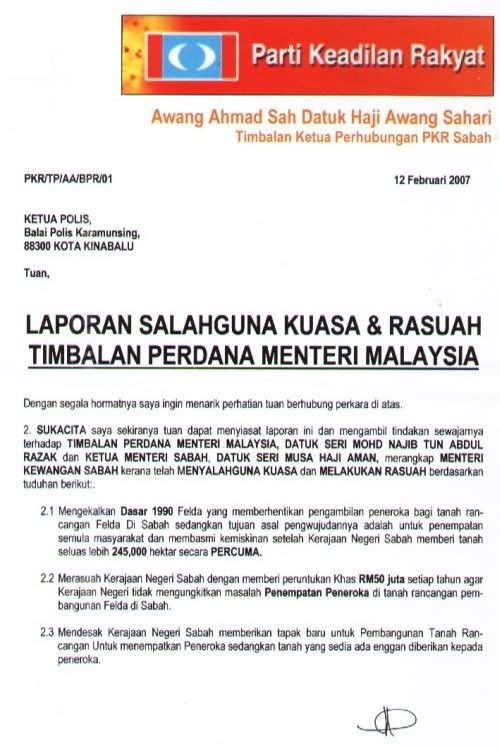
 In May 2005, Malaysia Today carried a special report in two episodes called ‘Sabah: the battleground for the Umno Deputy Presidency’. These are some of the things we said then: It is said: the Battle of Britain was won on the playing fields of Eton. But that is what the English say. Malays have another saying. And that is: the Battle of Umno is won in the State of Sabah.Since we are in the mood for clichés, might as well I ramble on with some others.
In May 2005, Malaysia Today carried a special report in two episodes called ‘Sabah: the battleground for the Umno Deputy Presidency’. These are some of the things we said then: It is said: the Battle of Britain was won on the playing fields of Eton. But that is what the English say. Malays have another saying. And that is: the Battle of Umno is won in the State of Sabah.Since we are in the mood for clichés, might as well I ramble on with some others.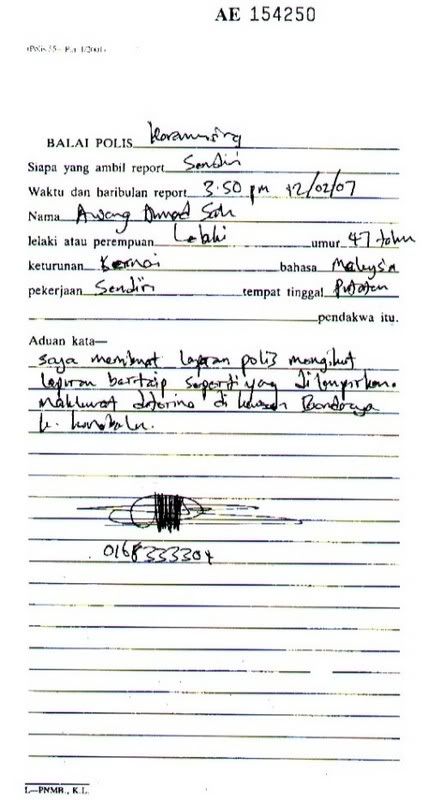 Traditionally, whether you eventually do become number one or not, would all depend on whether you can sustain the number two slot. Anwar Ibrahim did not. Neither did Ghafar before him. And Musa Hitam before that too suffered the same fate. They all retired as number two and never made number one. Of course, if Tun Dr Ismail had not died prematurely, things may have worked out very differently, especially since Tun Razak died in office.
Traditionally, whether you eventually do become number one or not, would all depend on whether you can sustain the number two slot. Anwar Ibrahim did not. Neither did Ghafar before him. And Musa Hitam before that too suffered the same fate. They all retired as number two and never made number one. Of course, if Tun Dr Ismail had not died prematurely, things may have worked out very differently, especially since Tun Razak died in office.
But Tun Dr Ismail died ahead of Tun Razak so everyone’s fortunes changed along the way and the end result was Malaysia ended up with Dr Mahathir Mohamad as Prime Minister for 22 long and dreary years...sigh...Okay, back to Sabah, what has Sabah got to do with all this? Simple, the Battle of Sabah has already begun. It in fact started awhile back as soon as Abdullah Ahmad Badawi took over as Prime Minister and Najib Tun Razak as Deputy Prime Minister soon after that.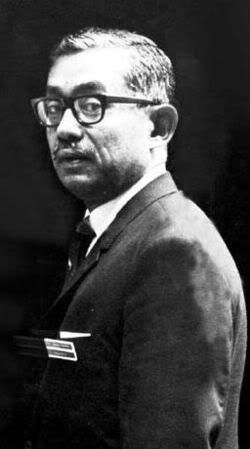
The multi-billion Ringgit question is: how long will Abdullah stay on as Prime Minister and will Najib take over once he retires (or is forced into retirement -- which is a scenario that cannot be discounted taking into consideration his dismal performance as Prime Minister thus far)?
Not even Abdullah knows how long he will stay on as Prime Minister. It could be another five years. It could be ten years. There are many factors that would decide this and Abdullah may have no say in the matter. And there is no guarantee either that Najib would be taking over once Abdullah finally moves aside, whenever that may be.
I have said this before and I will say it again: 24 hours is a long time in politics. Anwar Ibrahim got reduced from being  Dr Mahathir’s anointed successor (as confirmed by Dr Mahathir himself in Penang in late August 1998) to being ‘unemployed’ (on 2 September 1998) in a matter of days. If your political fortunes can change drastically in less than a week, what more if you need to linger for five or ten years? Much can happen in five or ten years to change the course of history. The 13 May 1969 race riots, Tun Dr Ismail’s and Tun Razak’s deaths, Umno’s entry into Sabah, the 1997 Asian Economic Crisis, and so on, all had a bearing on who eventually went on to become Malaysia’s Deputy Prime Minister or Prime Minister.
Dr Mahathir’s anointed successor (as confirmed by Dr Mahathir himself in Penang in late August 1998) to being ‘unemployed’ (on 2 September 1998) in a matter of days. If your political fortunes can change drastically in less than a week, what more if you need to linger for five or ten years? Much can happen in five or ten years to change the course of history. The 13 May 1969 race riots, Tun Dr Ismail’s and Tun Razak’s deaths, Umno’s entry into Sabah, the 1997 Asian Economic Crisis, and so on, all had a bearing on who eventually went on to become Malaysia’s Deputy Prime Minister or Prime Minister.
It is no secret that Abdullah’s son-in-law, Khairy Jamaluddin, wants to be the next Prime Minister after his father-in-law -- and he wants this to happen by the time he is 40. That is slightly over ten years from now.
So Khairy needs Abdullah to stay on for at least another ten years. If, for any reason, Abdullah has to retire prematurely, then Khairy’s fortunes would change. His chances of becoming the next Prime Minister are tied to Abdullah’s chances of staying on for another ten years or so. And, within the next ten years, Khairy needs to wangle himself into the number two slot in Umno -- meaning, he would then be the Deputy Prime Minister of Malaysia.
But this is easier said than done. Currently, the number two is Najib. And Najib too wants to be the next Prime Minister (and so would I if I was currently the number two) so he is not about to roll over and play dead. If Khairy wants Najib’s job he would have to fight for it. And Najib would certainly give Khairy a run for his money.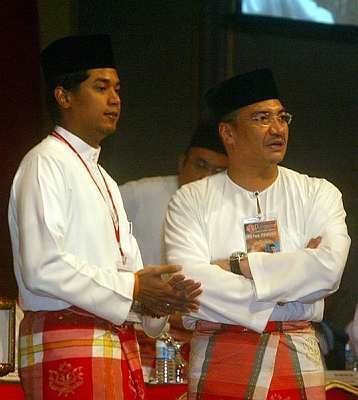 Khairy (read the Khairy Chronicles) has given himself ten years. This is what he told his close circle of friends who, understandably, are all excited over the prospect. He will go for broke these next ten years. If he makes it, well and fine, he will become Malaysia’s Sixth Prime Minister some time after 2015 (or maybe seventh if there is an ‘interim’ Prime Minister a la Goh Chok Tong of Singapore in the form of Anwar Ibrahim). If he does not, he will then move on and maybe build a new life for himself overseas. Either way Khairy has nothing to
Khairy (read the Khairy Chronicles) has given himself ten years. This is what he told his close circle of friends who, understandably, are all excited over the prospect. He will go for broke these next ten years. If he makes it, well and fine, he will become Malaysia’s Sixth Prime Minister some time after 2015 (or maybe seventh if there is an ‘interim’ Prime Minister a la Goh Chok Tong of Singapore in the form of Anwar Ibrahim). If he does not, he will then move on and maybe build a new life for himself overseas. Either way Khairy has nothing to 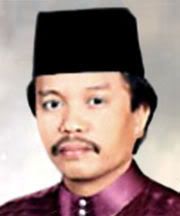 lose.
lose.
Khairy’s first task would be to dislodge Najib from the number two slot. The acid test would be the Sabah Chief Minister’s post. Khairy is backing the Chief Minister, Musa Aman, who is also the Umno Chief for Libaran. Najib, on the other hand, is backing Mohd Shafie Haji Apdal, the Umno Chief for Semporna and Federal Minister of Domestic Trade and Consumer Affairs.
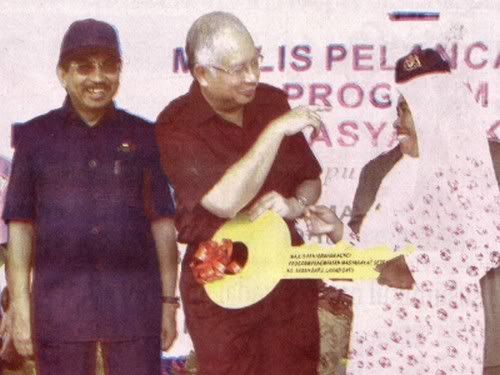 If Najib can engineer the ousting of Musa and can successfully place his man on the throne, then his hold over Sabah would be secure, just like Anwar before this. However, if Musa gets to stay on as Chief Minister, then Najib would find Sabah tough going, just like what Ghafar experienced. And, as mentioned earlier, whosoever wins Sabah would have the better chance of making it to, or retaining, the number two slot in Umno.
If Najib can engineer the ousting of Musa and can successfully place his man on the throne, then his hold over Sabah would be secure, just like Anwar before this. However, if Musa gets to stay on as Chief Minister, then Najib would find Sabah tough going, just like what Ghafar experienced. And, as mentioned earlier, whosoever wins Sabah would have the better chance of making it to, or retaining, the number two slot in Umno.
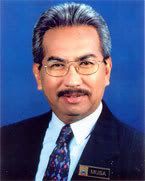 Khairy is definitely going all out to ensure Najib’s man does not make it and that Musa stays. And Musa, because of the many ‘cases’ hanging over his head, would have to ensure he is in Khairy’s good books lest he gets inserted into the list of 18 ‘high profile’ corruption cases sitting on Abdullah’s table.
Khairy is definitely going all out to ensure Najib’s man does not make it and that Musa stays. And Musa, because of the many ‘cases’ hanging over his head, would have to ensure he is in Khairy’s good books lest he gets inserted into the list of 18 ‘high profile’ corruption cases sitting on Abdullah’s table.
So let’s watch Sabah. What happens in Sabah would be a good indicator of how the fight for the number two slot in Umno is developing. If Musa is retained as Chief Minister, then Khairy would be in a very strong position to take on Najib. However, if Musa falls, then Khairy would be weakened, especially if his successor is a Najib man.
Sabah Umno has 25 divisions. Currently, 18 are opposed to Chief Minister Musa Aman while only seven support him.Sabah politics, just like in Sarawak, is unique in that ‘warlords’ call the shots and the federal government or the Umno headquarters have very little hold over the state -- worse still in Sarawak that does not even have any Umno presence there. That was the whole reason why Umno entered Sabah -- to control the state -- while Sarawak has ‘wisely’ resisted Umno’s entry into the state.
 Musa is only useful to the federal leaders as long as he can control his 25 state divisions. If he cannot, then he is of no use to them and he might as well be removed. Musa’s future would therefore depend on how he is perceived by the federal leaders, in particular Prime Minister Abdullah Ahmad Badawi and his team -- ‘team’ here meaning, of course, Khairy Jamaluddin, his son-in-law.
Musa is only useful to the federal leaders as long as he can control his 25 state divisions. If he cannot, then he is of no use to them and he might as well be removed. Musa’s future would therefore depend on how he is perceived by the federal leaders, in particular Prime Minister Abdullah Ahmad Badawi and his team -- ‘team’ here meaning, of course, Khairy Jamaluddin, his son-in-law.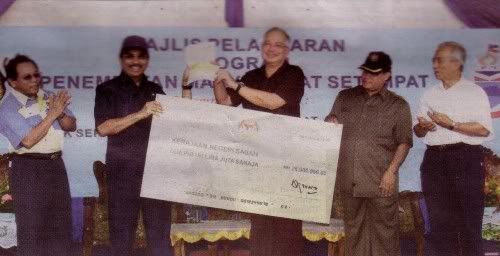 Amongst those said to be opposed to Musa are:
Amongst those said to be opposed to Musa are:And those in support of him are:

Some time back there was much brouhaha when a senior minister in Abdullah’s government announced there are 18 high profile corruption cases which the Anti-Corruption Agency would soon be bringing to book. After that sudden outburst, the country reverted to silence.
According to Khairy, the government has not abandoned the cases. Far from it, the cases are still very much on the government’s radar screen. They just need to wait for the opportune time before pursuing them.On this list, 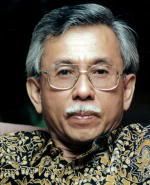
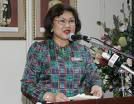 according to what Khairy told his close associates, are ex-Prime Minister Dr Mahathir Mohamad, one-time Finance Minister Daim Zainuddin, International Trade Minister Rafidah Aziz, Deputy Prime Minister Najib Tun Razak, Najib’s wife Rosmah Mansor, Perlis Chief Minister Shahidan Kassim, Selangor Chief Minister Khir Toyo, and a few more -- basically all those viewed as a threat to either Khairy or his father-in-law.
according to what Khairy told his close associates, are ex-Prime Minister Dr Mahathir Mohamad, one-time Finance Minister Daim Zainuddin, International Trade Minister Rafidah Aziz, Deputy Prime Minister Najib Tun Razak, Najib’s wife Rosmah Mansor, Perlis Chief Minister Shahidan Kassim, Selangor Chief Minister Khir Toyo, and a few more -- basically all those viewed as a threat to either Khairy or his father-in-law.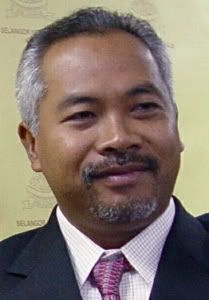
Senior Umno officials feel the list is slightly too high-powered and smacks of another Anwar Ibrahim corruption/sodomy situation.  They are of the opinion that, while Khairy may be all gung-ho in his spring cleaning, Abdullah would never dare go for it. Dr Mahathir and Daim are just too powerful and untouchable, and if Khairy presses his father-in-law to bring both these warlords to book it may spell the end for Abdullah.The same goes for Najib and Rosmah as well. As much as Khairy may be keen to remove Najib as number two together with whom he perceives as Najib’s ‘mastermind’, Rosmah, it would be too obvious that it is politics and not corruption that is the issue. So Najib and Rosmah may be just as untouchable as Dr Mahathir and Daim. As we all know, a Tsumani starts with an earthquake. Will there be a major tremor in Sabah that will trigger a political Tsunami, resulting in a significant power shift in Umno?
They are of the opinion that, while Khairy may be all gung-ho in his spring cleaning, Abdullah would never dare go for it. Dr Mahathir and Daim are just too powerful and untouchable, and if Khairy presses his father-in-law to bring both these warlords to book it may spell the end for Abdullah.The same goes for Najib and Rosmah as well. As much as Khairy may be keen to remove Najib as number two together with whom he perceives as Najib’s ‘mastermind’, Rosmah, it would be too obvious that it is politics and not corruption that is the issue. So Najib and Rosmah may be just as untouchable as Dr Mahathir and Daim. As we all know, a Tsumani starts with an earthquake. Will there be a major tremor in Sabah that will trigger a political Tsunami, resulting in a significant power shift in Umno?
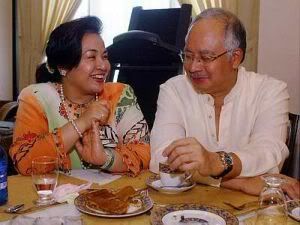
In the past, Sabah has been a factor in both Anwar’s and Abdullah’s political fortunes. Both Najib and Khairy hope, once again, Sabah would be able to play this role of kingmaker. But they must ensure, first of all, that ‘their man’ gets to sit on the Sabah throne.
 This statement from Taib is really demeaning to the politicians to the like of Tan Sri Alfred Jabu and Dato Sri Abang Johari Openg. Being the Deputy Chief Minister for several years, Taib meant to say that Jabu and Johari are not capable leader to be a good successor? If none of his deputies is good, he should sack them. Why keeping a no good leader at the expense of the taxpayer money?
This statement from Taib is really demeaning to the politicians to the like of Tan Sri Alfred Jabu and Dato Sri Abang Johari Openg. Being the Deputy Chief Minister for several years, Taib meant to say that Jabu and Johari are not capable leader to be a good successor? If none of his deputies is good, he should sack them. Why keeping a no good leader at the expense of the taxpayer money? 
 because for the past 26 years Taib helmed the state not much progress has been achieved, beside those superficial development in the big town like Kuching, Miri or Sibu. Going further to the interior, you will see the most deplorable road conditions. People are sufferings from rising cost of livings,
because for the past 26 years Taib helmed the state not much progress has been achieved, beside those superficial development in the big town like Kuching, Miri or Sibu. Going further to the interior, you will see the most deplorable road conditions. People are sufferings from rising cost of livings, 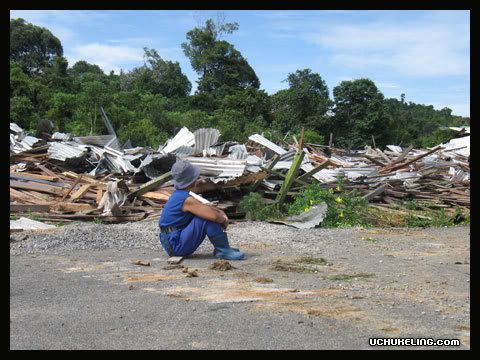 NCR land being confiscated, longhouse dwellers are being evicted and displaced. They are deprived of their ancestral land. They are threatened and being forced to accept whatever the state government want them to be.
NCR land being confiscated, longhouse dwellers are being evicted and displaced. They are deprived of their ancestral land. They are threatened and being forced to accept whatever the state government want them to be. It is still undisclosed how the incident had happened. However, it is most unconvincing that the villagers were the aggressors since they had taken the trouble to lodge 7 police reports and written to the IGP with photographs. From the police reports, it can also be seen that they had tried to tolerate and avoid the physical conflicts with the group of intruders.
It is still undisclosed how the incident had happened. However, it is most unconvincing that the villagers were the aggressors since they had taken the trouble to lodge 7 police reports and written to the IGP with photographs. From the police reports, it can also be seen that they had tried to tolerate and avoid the physical conflicts with the group of intruders.The mill is leading to further clearing of 216,000 ha (28% or 60,000 ha are NCR land) of land in the surrounding area for namely Acacia Mangium plantation where synthetic chemical fertiliser (800 g per tree) and pesticide would be applied. A total of 606,000 ha of primary and logged over forest land is designated as supply ground for the pulp and paper mill.
An EIA for the projects was carried out in 1996 and the project was approved in December in the same year. The 277 families of the immediately affected 12 longhouses only then started to realize that the promise of a compensation of RM 6,000 for an acre has shrank to RM 1,600.
The contractors soon arrived to carry out land clearing and claiming the right to sell the logged timber. All these factors sparked off immediate conflict between many local residents with the project proponent.
A committee of 7 members was formed by the affected families in September 1997, headed by Jaili bin Sulaiman, an ethnic Kenyah Muslim. It exists to seek justice and fair compensation for the NCR landowners.
On 5 November 1997, Jaili was arrested and charged with threatening and causing obstruction to the proposed RM3 billion project. The incident then led to the demonstration of 30 other members of the community, demanding the immediate release of their leader in front of the police station in Bintulu where he was being remanded.
The people then further organise themselves in seeking a court injunction to prohibit the project for taking over their NCR land in the total 6,200 ha of area designated for the mill project. Their counsel has also filed an initial urgent application on behalf of Jaili in Miri Hugh Court against the Ministerial Directive dated 6 February, 1997 and the court set 22 April as the date for the hearing.
2. Bakong shooting case: A dispute happened between the Iban longhouse villagers in Bakong (about 100 km from Miri) against workers of the companies that are going to develop their land. During the height of the incident, the villagers were alleged to have seized three bulldozers from the workers and allegedly attacked the police officers who had moved in to retrieve the bulldozers.
Three villagers and eight policemen were injured in the clash which followed. A villager later died from a gunshot wound in the head at the Miri General Hospital.
On 29 December 1997, the longhouse head TR. Banggau Andop & 2 others filed a suit to stop the activities of the oil palm plantation companies, Segarakam Sdn Bhd, Prana Sdn Bhd, and Empresa (M) Sdn Bhd within their native customary land. They also named the Land Custody and Development Authority (LCDA) and the state government as defendants in the case. They are challenging the issue with intend to have the court declare as illegal, null and void the provisional lease issued by the Land and Surveys Department.
The counsel for Prana Sdn Bhd told the court that the firm had stop operation and is withdrawing from the area.
Immediately after the court case on 23rd January 1998, Headman TR. Bangga was arrested by the police. There was no explanation given to him for his arrest. When TR. Bangga was release after the remand, he was charged by the police with 'gang robbery' and 'using of arms in a riot'. However, these charges are yet to be produced to the magistrate. This shows that instead of carrying out an investigation on the shooting, the police are pressing serious charges against the community people.
3. In Sg. Bong 42 Indigenous People were arrested in Sg. Bong, Teru, Miri Division in a dispute with an oil palm plantation company when they were trying to negotiate a peaceful settlement with the land surveyors who work for the plantation company in June, 1997. The 42 arrested were then asked to sign a bond of good behaviour.
A number of them refused to sign and challenged the magistrate in the High Court. The court ruled in favour of the people. This is a clear case of wrongful arrest. The community of Rumah Reggie then challenged the company by filing a court injunction against the plantation company, Nationmark, with the hearing set for April, 1998.
4. Problems faced by the Penan community in Ulu Baram. The Penan are one of the several smaller indigenous ethnic groups in Sarawak, with some still leading their already threatened nomadic lifestyles. They were in Sarawak even before the Brunei sultanate reign in Sarawak.
The livelihood of the Penan community in Ulu Baram has been greatly affected by the logging activity in their areas since the loggers encroached into the interior of Baram, Miri Division in mid 1980s.
A series of blockades highlighted in 1987 had brought national as well as international attention. However, much efforts in the last ten year, including the numerous appeals made by the Penan themselves to the authorities and parties concern seems to have fallen on deaf ears.
The problems they continue to face become more immediately, and among others, are:
Logging is continuing to wreck havoc on the environment, encroached upon communal territories, and threaten the very existence of the people;
Water supply from the rivers and other water catchment area being polluted by logging and related activities;
The weather is getting hotter with disappearing forest, resulting in many people getting sick; (note: they are people of deep forest, drastic change of physical environment would be hard for them to adjust)
The continuing presence of armed Police Field Force and the numerous threat from the police against community people.
With the forest fast disappearing, their main source of livelihood is almost destroyed. The plants and trees, which act as a combination of food and medicinal source for the people and various animals, are decreasing and a lot of fish in the rivers are killed due to pollution.
Besides, outsiders and other communities who have the means have intruded into the Penan village vicinity and compete for their wild game, fish and other food sources. This has also caused tension among the different communities.
All these problems are a consequence of the activities of timber companies and the armed Police Field Force (PFF) in the area, with the PFF clearly on the side on the timber companies and their workers.
Whenever the affected villagers want to defend their rights over their land from further destruction by the timber companies, the PFF would be there to intimidate the Penan harshly and sometimes pointing their guns towards them, throwing tear gas, or arrest them.
Many have in fact been arrested, imprisoned and some are still awaiting their trial for defending the Penan's land and their livelihood. These have continued to worsen the people's suffering.
5. Sebatu-Suai illegal land clearing. The 110 families of Sebatu-Suai, in the Miri Division is in the process of filing for a court injunction to stop plantation company from further carry out work on their NCR land.
Since July 1996, these 110 Iban families at Sebatu-Suai have been struggling to protect their NCR land from being bulldozed and turned into an oil palm plantation by a joint-venture company between the Sarawak State Government and Tradewinds Plantation Services Sdn Bhd of West Malaysia.
Johnson Enterprise, Tradewinds contractor, had initially sent the local residents a letter offering to buy their land at RM100/ per acre. However, this was met with strong rejection by these 110 families. Nevertheless, Johnson Enterprise continued its field clearing work without the affected peoples' consent.
A series of community action to stop the destruction of their crops and land have been done by the people since the beginning, including:
· complaint lodged with the District Officer and requested for official intervention on 17th Sept.1996;
· held 'Miring Bebuling Menoa' ceremony according to Adat Asal (traditional customs) on 3 Dec.1996 and at the same day withheld company's bulldozer and sent it to Batu Niah Police Station hoping to halt further damage to their land;
· lodged police report on the damaged of their property caused by the plantation company on 7 Dec.1996;
· gathering of 60 persons at their 'temuda' (communal land) to stop the workers from continuing field work and withheld bulldozer and later submitted the key to the police station on 16 January.1997.
Instead of looking into their issue, the authority sent a troop of policemen , about 15 in number, on 17 Jan.1997 to one of the longhouse, Rumah Junit, and remanded 5 persons for 10 nights at the Miri police station for investigation and later charged them for disturbing peace.
They were released on self-bail of RM1000/- each. Later, the Magistrate bonded them over for good behaviour.
6. Suai Tengah people's alert. In December, 1997 Sarawak Oil Palm Bhd (S.O.P.), a public listed company with a state statutory body, the Land Custody and Development Authority (LCDA) being majority share holders, commissioned a surveying work in the affected longhouses' menoa through private surveying company without permission from the 4 longhouses, - Rh. Lasan, Rh. Libau, Rh. Gerang, and Rh. Abot., Miri Division.
Also on 3 Jan.1998, the longhouse people came across a 'News In Brief' in a local newspaper announcing the plan of S.O.P. to open another 9 blocks of land in their area for plantation. The longhouse residents immediately realised that the two matters were in fact related or of the same project.
These Iban residents immediately took up a series of action to deal with this unauthorised survey issue. A dialogue session was arranged at Sepupok Niah SAO (Senior Administrative Officer) Office on 17.1.98.Even after these actions, the people still felt uneasy and rather worried about the said plan of S.O.P.
An inter-longhouses meeting was called on 4 Feb.1998 to decide on actions to be taken. On the next day, a delegation of 25 representatives (Headmen and longhouse representatives) went to Bintulu to meet with the chairman of PBDS (Parti Bangsa Dayak Sarawak is a component party of the ruling National Front Coalition Government) and the State Assembly member, Mr. Michael Sim to express their anxiety over the plantation matter. These two persons in the governing structure promised to bring the matter to the attention of the higher authority.
The longhouse folks did not feel much better after these words of assurance.
On 6 Feb. 98, they had another inter-longhouse meeting and this time they decided to go to a lawyer to draft and send two memorandum letters on the matter. This was done on 9 Feb. 1998 in Miri.
7. Kanowit-Machan resistence. This area is one of the pilot project of developing NCR land according to 'Konsep Baru' beginning in 1997. However, several longhouses in Sungei Tuah (such as Rumah Pius and two others) and in Machan-Durin, Sibu Division (such as Rumah Jali, some families from other longhouses such as Rumah Muli and Seling) have strongly and repeatedly informed the authority of their stance against joining the oil palm plantation, and instead had chosen to develop the land by themselves.
However, the authority and the plantation company concerned seemingly choose to ignore their rights to decide on their own. All through the field clearing period for the oil palm planting, bulldozers razed through their temuda and Menoa without permission or consultation. Crops, fruit trees as well as the only gravity pipe water system were destroyed and land were made bareness.
Affected families then organised themselves and took shift to check and guard their land and menoa boundary in order to deter further encroachment (such as Rumah Jali's folks were on a 24 hours shift duty). Nevertheless, some parts of their land were still damaged by the plantation activities. Protest letters demanding cessation of encroachment activities and compensation for the land disturbed according to Adat (traditional custom) were either sent to or handed in person to the plantation company and authority concerned.
After all these rounds of defending their rights to their own land, the plantation company have presently cease to further encroach onto their land but demand for compensation to damages are still yet to be settled.
24 May 2000 - Press Statement
It is most distressing and disappointing that the Land Code (Amendment) Bill 2000 was passed on 9th of May, 2000 by the Dewan Undangan Negeri Sarawak within such a short time and no clarification or explanation were offered to address the doubts of natives in Sarawak as to protection and preservation of their customary rights and practice over their ancestral land.
Contrary to their wishes and aspiration, the passage of this Land Code (Amendment) Bill further restricts the indigenous communities to their claims for native customary rights over their land and enables the state government to extinguish such customary rights with greater ease.
Before the amendment, the Indigenous communities could claim and prove their rights in accordance to the provisions of the Land Code and the adat, or customary laws and practice.
With the amendment, the native rights over land are restricted to the description of the new bill, which in actual sense is a denial of the full essence of the adat.
The new bill deleted the clause of 5(2)(f) 'any other lawful methods' in claiming Native Customary Right, NCR land. This would not allow them to claim rights over the menoa (Iban term for ancestral domains or communities territory), pulau galau (communal forest) and penurip (Penan adat of forest area for hunting-gathering purposes) or Jelajah Asal for the Kenyah and Kayan, which are essential to the indigenous communities in maintaining their ways of living.
The restricted claim includes only the temuda such as farmland, buried ground or shrine. In this sense, the amendment denies the rights of the indigenous people to continue their culture and practices.
Such amendment can be seen as an effort to give easier way for the top down approach of centralisation in the implementation of leader's single-minded vision of development, rather than decentralised diverse and dynamic systems. This will inevitably led to monoculture or homogenous way of living.
Consequently, the blessed cultural diversity of the nation would eventually be lost as a result of the denial of indigenous people's rights.
Further, in the amendment, the Register of native rights is a separate register from the Register kept in the Land Office. It is unlikely that such title is of any value because the registration is merely a record with no conclusive prove of ownership to the land. It is therefore, not useful for any transfer, transmission, acquisition or inheritance, and bank loan purposes.
We, the undersigned NGOs would like to call for a review of the amendment, to give time for consultation with the indigenous communities, and to commission further study of the NCR land issue, as well as to open for more public discussion.
A sincere recognition of native customary land rights would have to incorporate the claims with the Register kept in the Land Office, with document of tittles given to these landowners with land tenure in perpetuity.
Landmark Ruling Secures Native Land Rights
By Harlan Thompson
On May 12th, 2001, the High Court in Sarawak, a Malaysian state on the island of Borneo, issued an extraordinary ruling that could have sweeping consequences for indigenous land rights. After two years of litigation, the court upheld the customary rights the indigenous Iban village of Rumah Nor, finding that the Sarawak Land and Survey Department has wrongfully issued a license to the Borneo Paper and Pulp Company who had in turn destroyed a tract of rainforest belonging to the community.
On May 12th, 2001, the High Court in Sarawak, a Malaysian state on the island of Borneo, issued an extraordinary ruling that could have sweeping consequences for indigenous land rights. After two years of litigation, the court upheld the customary rights the indigenous Iban village of Rumah Nor, finding that the Sarawak Land and Survey Department has wrongfully issued a license to the Borneo Paper and Pulp Company who had in turn destroyed a tract of rainforest belonging to the community.
This decision-which in no uncertain terms expands the definition of customary lands to include rivers, streams and communal forests-is a significant precedent for native villagers seeking land rights in Malaysia. Prior to the ruling, only farmlands actively cultivated by forest dependent communities could be considered native customary lands.
Over the years, laws and legislation in Sarawak have chipped away at indigenous rights to ancestral lands, so indigenous groups have been overjoyed by the news. Malaysia lawyer Meena Raman commented, "The court decision was a very major victory in terms of the jurisprudence on native rights. Let's hope it hope that it will withstand any further appeals to the upper courts."
Immediately following the decision, both the Sarawak Land and Survey Department and Borneo Paper and Pulp Company announced they would appeal the case. Yet in doing so, they will face significant pressure from indigenous Dayak groups who make up the majority in Sarawak and will likely make this a major election issue in the coming months. If upheld, the ruling could have broad implications for native land rights struggles around the world, since legal precedents from British Commonwealth countries like Malaysia can be used in other Commonwealth countries.
The ruling Two years ago, the Borneo Pulp and Paper Plantation (BPP) company began cutting down forests claimed by the Iban community of Rumah Nor. The BPP had been granted a title from Sarawak's Land and Survey Department to create a 1 million hectare plantation for raising fast growing tree species. Villagers from Rumah Nor were never informed or consulted about the title, and when they discovered the damage to their land, they sued to stop the logging and claim damages.
Given that recent laws and court decisions have favored industrial developers over indigenous farmers, this decision handed down by High Court Judge Datuk Ian Chin Hon Chong comes as a shock. The High Court ruled that the BPP was not allowed to enter a disputed 672 hectare area, and placed an immediate injunction on the company from entering these lands. The BPP title to this area was declared null and void, and the Land and Survey Department was ordered to rectify the BPP land title to exclude this area. The judge furthermore ordered BPP to pay all court costs incurred by the villagers of Rumah Nor.
However, it was the legal reasoning of Judge Ian Chin that proved most encouraging for native groups. In a 96 page verdict, he ruled that indigenous land rights were in existence before any external power controlled Sarawak, and therefore such rights were natural rights and "not dependent for its existence on any legislation, executive or judicial declaration". He further ruled that these rights extended not only to areas farmed, but to all forests, rivers and streams within one half day's journey from a village longhouse, unless limited by the borders of other nearby villages.
Common practice in Sarawak requires communities to prove to outsiders their Native Customary Rights (NCR). Perhaps half of all of Sarawak's lands should be classified as NCR lands, but so far very few villages have cleared all of the many legal hurdles needed for their NCR status to be officially recognized. So indigenous people are often treated like squatters on their own lands when loggers approach. Judge Chin, however, ruled the assumption should be that such lands are NCR lands, and the onus will be on other claimants to prove that they are not.
When considering arguments raised by the defendants, Judge Chin appeared sympathetic to the plight of indigenous peoples. For instance, the defendants did not argue that since a logging company cut down most of the large trees on Rumah Nor’s lands in the 1980, the village had given their forest rights to that logging company. The judge disagreed, stating "we must not forget that the natives ... consist of not only adults but children as well, and it is inconceivable that such children can be deprived of their rights just because the adults decide to sell some or all of the timber from a forest." He also ruled that the cutting of trees in the 1980's was the destruction of valuable evidence determining how old the forest was, and that in future cases tree data would need to be collected and inquiries into land claims conducted before any logging could proceed. Currently, villagers often do not know their land is being logged until the bulldozers and chainsaws have arrived.
Reactions Two hundred indigenous people were at the court when the lawyer for the plaintiffs, Baru Bian, read out the verdict. Many elders cried unashamedly. Village headman Nor Nyawai stated, "I am breathless and I simply cannot describe just how happy and relieved I feel right now." The indigenous community is euphoric, and villagers all over Sarawak are planning especially joyous celebrations for Gawai Dayak, the harvest festival held on June 1st.
Yet news of the case is spreading mainly by word of mouth, as Sarawak's mainstream media has refused to cover the court case. Most radio stations and one major newspaper, the Sarawak Tribune, have blacked out the story all together. The media silence is not surprising in Sarawak where most media outlets are owned by logging and plantation interests who would be adversely affected by the ruling if more villages assert their land rights.
The government announced its opposition to the ruling and will appeal the decision, since the Sarawak State Land and Survey Department is one of the defendants. The government opposition is not surprising given that Sarawak's Chief Minister has gained billions from handing out logging concessions, and the Environmental Minister is one of the largest logging concession holders in the state. In fact, many are wondering how far the government will go to oppose the ruling. The Appellate Court that will review the ruling ordinarily only looks at the finer details of the case and does not change the main thrust of the High Court's ruling, but they may face pressure to make major changes in this instance. In other cases in Malaysia, judges issuing rulings that strongly conflict with government interests have been forced to retire.
Judge Chin ruled that communities could lose their NCR rights if laws explicitly extinguish them, and if the government loses the appeal they may press hard to pass new laws doing just that. However, approximately half of Sarawak's population is indigenous, and so such steps would be unpopular. The ruling party has been beset by troubles lately, and can ill afford to alienate more voters. Elections will be held later this year, and already the opposition party Keadilan Sarawak has announced that they will make the government's opposition to the ruling a major issue in the upcoming campaign.
Maps were essential. The ruling would never have come about without years of hard work by local non-governmental organizations (NGO's) who have organized local communities and helped them understand and defend their legal rights. Rumah Nor was assisted by the Borneo Resources Institute (BRIMAS) and a legal team headed by lead council Baru Bian. A crucial piece of evidence in the case was a village map created by BRIMAS mapper Samy Anak Ising. Samy was cross examined for three days in the court room, as the defendants led by BPP questioned the methods, data and equipment he used to make the map. In the end, the judge declared, "the map he produced is as accurate as it can possibly be given the equipment he has."
The importance placed on the map in the judge's written ruling was a vindication for The Borneo Project's mapping program. Starting in 1995, The Berkeley, California based Borneo Project helped initiate a mapping program with several local NGO's, including BRIMAS, and Samy Ising was one of the many mappers trained by the Borneo Project.
This court case should greatly facilitate the use of maps in future cases. Judge Chin ruled that while the defendants "demanded perfection" from the map, such perfection was not necessary in proving who owned the disputed land area. Currently over 20 cases involving NCR claims are working their way through the Sarawak court system, and over 50 villages have been mapped. But the need for additional maps and lawsuits to prove NCR rights will undoubtedly grow in the wake of this ruling.
While the full implications of this case may not be known for a long time to come, the short term impacts have provided a boost to the indigenous and environmental movements, not only in Sarawak, but worldwide. Just as Judge Chin quoted precedents from Australia and Canada in making his ruling, so this decision may be used by native groups in any of the 54 countries belonging to the British Commonwealth. Defendants for Borneo Paper and Pulp argued in their case that "the natives are squatters" on their own traditional lands, and for far too long the government has been treating them as such. At least for now, that argument is no longer legally defensible.
The only policies that Taib's administration had proudly acknowledge is his so called 'Politics of Development' which is more of 'Politics of Exploitation'. Exploitation of the state natural resources, the NCR land, practising of nepotism and cronyism. According to Dato Daniel Tajem the state government is carrying out a “legal genocide” by using the law to take away native customary rights (NCR) land and to abolish the word ‘Dayak’ as a subtle means of annihilating the community.
According to Dato Daniel Tajem the state government is carrying out a “legal genocide” by using the law to take away native customary rights (NCR) land and to abolish the word ‘Dayak’ as a subtle means of annihilating the community.
"Sarawak is rich, the leaders are rich but the rakyat is poor", said Anwar Ibrahim at a press conference in Kuching during the 2006 Sate Election. World Bank report on Malaysia's poverty index which revealed that most of the 1 million hardcore poor comprised Sarawak’s Dayaks and Sabah native peoples.
For example, the majority of the Ibans are still trapped in low-return agricultural activities, low-paying jobs, and lack access to education and business opportunities.
Look at the rural infrastructures (eg. trunk road, village road, etc) are in most deplorable condition.
When the host pressed him for an indication of who his successor could be, he answered: “I try to plan. Over the last 10 years, I have groomed some people but as I had said I can only plan but God will decide".
There he goes, invoking God as an excussed. He said he had groomed some people over the last 10 years, but what happened to those he has groomed? Where are they now?
Infact the very people he has groomed still in the government, speak volume of Taib's dictatorial style. He is in actual fact are reluctant to religuish his post as Chief Minister due to the fact that he could not trusted the very people he has groomed to protect his family vast business interests in the state.
It was Dato Sri Effendi Norwawi and Dato Adenan Satem, used to be his most trusted men. But due to Effendi marital and other personal problems, Taib was reluctant to hand over the Chief Ministership at that time. It was a well known secret that during Effendi tenured as SEDC CEO that Taib began to en-masse his family enormous wealth and fortune. To appoint Effendi as a successor more of sort as a return of favour.
The fallout with Dato Adenan Satem, perhaps was personal.
Pengkhianat kini dalang percaturan politik Sarawak
Tulisan Hakim Bujang
[...] Selama ini, Taib memang memberi keutamaan kepada naib presiden PBB, Datuk Seri Adenan Satem. Adenan ialah seorang yang bijak. Dia tidak gopoh, dan sebagai pulangan dia mendapat sokongan padu Taib.
Tetapi kini, Adenan kesuntukan masa. Dia tidak mampu lagi menunggu, jika tidak, dia akan ketinggalan dalam menempatkan dirinya dalam peta politik Sarawak. Taib yang sebelum ini sudah nampak bersedia melepaskan kuasa terpaksa menangguhkannya bagi menyelesaikan masalah perniagaan keluarganya.
Mereka yang mengikuti perkembangan perniagaan keluarga Taib akan tahu keadaan ini. Taib sedang cuba sedaya upaya untuk mendapatkan semula projek Bakun. Dia terpaksa menjelaskan hutang bank RHB. Dia juga perlu memastikan semuanya berjalan lancar bagi CMS dan juga Naim Cendera.
Taib tidak boleh melepaskan kerusi Ketua Menteri, bukan hari ini, esok atau bertahun lagi. Dia perlu memastikan jawatan Ketua Menteri dikekalkan dalam keluarganya. Pakciknya Tun Abdul Rahman Yaakub telah melakukannya dengan memberikan jawatan tersebut kepada Taib pada tahun 1981.[...]
Asked whether he could call Minister in the Prime Minister’s Department Dato Sri Effendi Norwawi back to Sarawak, he said: “Effendi is now needed by the Prime Minister and I leave it to Effendi to decide on his future, and come to discuss with me when the Prime Minister no longer requires him.”
A future chief minister is expected to come from this slate of younger leaders “who would be guided by their seniors” acting as mentors, said Taib in his closing press conference after the PBB triennial general assembly.
Datuk Seri Adenan Satem, who had perhaps hoped too much to be chief minister and finally gave up in frustration, and possibly Datuk Seri Effendi Norwawi, who has had to contend with some rather well-publicised personal problems recently.
Effendi at 60, may no longer have age on his side. Nevertheless, he presents a good image, noted his friends in the PBB.
Sarawak business circles are still reluctant to write off Effendi, who for far too long was Taib’s favourite and a trusted Melanau.
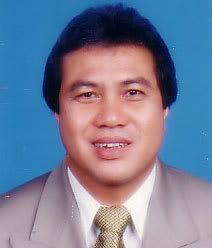 For now, delegates to the triennial general assembly held at Miri readily turn to party treasurer Datuk Seri Awang Tengah Ali Hassan, the incoming senior vice-president, as the man to watch. Coming from a humble family background, Awang Tengah has suddenly found himself moving in circles where power and money are a heady mix and where he has had to exercise the greatest self-discipline to stay on course.
For now, delegates to the triennial general assembly held at Miri readily turn to party treasurer Datuk Seri Awang Tengah Ali Hassan, the incoming senior vice-president, as the man to watch. Coming from a humble family background, Awang Tengah has suddenly found himself moving in circles where power and money are a heady mix and where he has had to exercise the greatest self-discipline to stay on course.